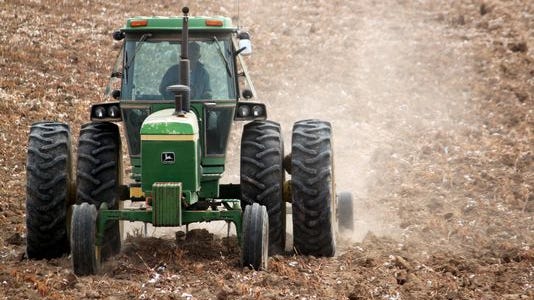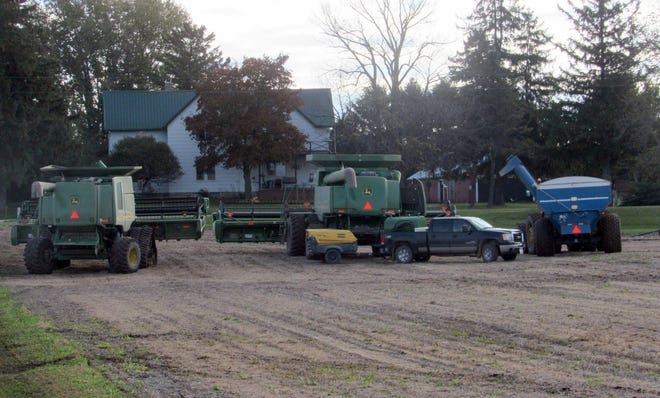Six strategies for managing labor expenses on the farm
 Carol Spaeth-Bauer
Carol Spaeth-Bauer
Larger farms means more labor. Labor is the second largest expense on farm budgets with many factors outside the business affecting that particular line item. Things such as rising minimum wage, OSHA regulations, immigration reform and competition.
"That (competition) is a major driving force in many areas," said Jason Karszes during the Professional Dairy Producers of Wisconsin (PDPW) Strategies for Rising Labor Costs webinar on Jan. 8.
When it comes to managing labor costs on the farm, key questions arise. Where are all the labor hours concentrated on farms? What parts of the business have the greatest opportunity for improvement or change or for impacting that labor cost? Where are we starting from?
When it comes to managing human resources on a farm, the objective is to maintain or improve profitability as cost per hour of hired labor increases.
"If we have to pay more for our labor how do we maintain improved profitability of our business over time?” Karszes asked.
Management of labor focuses on three areas: decrease the number of hired labor hours utilized, increase the amount of output per hour of labor and get increased earnings per hour of labor. Decreasing the number of hours of labor sometimes ties together with increasing the output per hour, said Karszes.
Management strategies to focus on these expenses usually involve a combination of approaches. Strategies Karszes sees discussed in the northeast part of the country are human resource management, capitol investment, lean systems — that ties into labor effectiveness, custom services and joint venture collaboration.
Human resource management
A starting point for human resource (HR) management is realizing the importance of that management for the business.
"We have more employees, as we have more employees we have more management levels and we start having employees move into management-type positions where they might be overseeing employees," Karszes said. "As soon as we have more employees and more management levels, we have opportunities for improvement on the HR side."
When recruiting and hiring, producers need to ask, are they getting the right people on board as best they can? It’s a challenge. On farms in New York, "if they walk in the door and can write their name, they’re hired because we need people," said Karszes. "Sometimes that’s the reality but can we improve?"
As employees are brought on board, can training and advancement be standardized and improved? Employees need performance feedback so they know how they are doing on the job.
The culture of business on the farm is also important. Is the farm an employer of choice in the area? Is working there fun, safe and comfortable and if not, how can it be changed? What type of employees come to work on the farm? Do employees from other businesses come there? From the perspective of employees, Karszes said social licensing is important, "because employees talk."
"And if some farm starts getting a poor reputation, what might that social license look like for other people to come work here," said Karszes. "On the culture part that is a pretty critical piece."
As business owners try to improve human management, they look at having less wasted hours. While there will always be some, can it be decreased? If employees don't know what to do next, they will stand around? Are they accomplishing what should be done instead of just staying busy?
Karszes said he could do a whole webinar on cell phone policies and management.
If there is increased output, fewer people are needed and they are getting a better job done.
Human resource management is the cornerstone for some of the efforts to minimize rising labor costs. The challenge with this is results may be slow in coming.
"It might take a year or two or three to really change things on the human resource side on individual farms," said Karszes. "We are also never done because employees change, employees' situations change, we bring in new people, people retire or leave."
For producers, HR management can be hard. They have work to be done on the farm. They don't have time to be a HR manager, but how can that be improved? Karszes said that leads to the questions — what skill sets need to be acquired or developed? Or should someone be hired to work so the producer can develop the necessary management skills? There is also the possibility of hiring a HR person with the needed skills or possibly looking into a joint venture.
Capital investment
Capital investment is not a new approach in business. Back during World War II labor became expensive because it wasn't available. Capital investment impacts labor in two ways — by decreasing the number of hours required and/or increasing the amount of work that can be done in an hour.
There are quite a few areas of capital investment that come up such as automatic milking systems, calf feeders, larger feeding equipment, larger harvesting and spring planting equipment. With 50% of labor going to milking cows, what impact would an automatic milking system provide?
The key to capital investment is, it’s not just labor, said Karszes. How does it affect output? How does it impact other input costs such as repairs, supplies, those types of things? There is a good chance its going to lead to increasing other cost categories such as depreciation, interest, taxes, insurance.
In thinking about making a capital investment it's important to think about the DIRTI five — depreciation, interest, repairs, taxes, insurance, Karszes advised.
When considering capital verses labor, trying to eliminate or minimize labor costs is an annual cost that is variable and increases over time.
With capital, once the money is invested, it's a set cost. "If we walk away from it, it still has to be paid for," said Karszes.
There are operating costs associated with the capital investment that change annually. At what rate do those increase?
Owners then need to consider that decision over the useful life of the capital investment. How much of the capital investment can be supported by less labor costs, Karszes pointed out —thinking about year one and then over the years of the life of the investment where increases in labor costs over the useful life of the investment are avoided and there is less management time spent on labor.
"Just because it might save labor doesn’t mean it’s cost effective," said Karszes.
Lean systems
Lean systems have been used 20 years or more in the manufacturing world where they continuously look for improvements, ways to minimize waste and meet customer expectations with minimal cost and lead time.
There are many different tools and processes for adopting the concept to dairy. Assess how long it takes to do an activity and determine the protocol and standard operating procedures for the activity.
Can the amount of time be decreased while achieving the same or better quality? Karszes gave the example of tools and supplies being placed where they are used to minimize time spent searching for tools and supplies.
Karszes recommends training staff in the order of tasks and procedures, breaking down things that are too complex so there is less time spent on the activity — break an hour-long task into five minute smaller tasks.
“If we can decrease hours of labor — have less total hours — we can decrease labor costs even though the cost per hour went up," said Karszes.
Labor effectiveness
Labor effectiveness is not the same as labor efficiency. It's looking at the impact labor has on productivity and cost and focusing on things that decrease financial performance. Karszes suggests avoiding unnecessary expenses and disruptions to activities.
"If labor does a better job generating profit, they can be paid more," Karszes said.
Assessing labor effectiveness involves looking at tools lost or needing to be replaced or time wasted looking for tools when they aren't where they are used. It also includes equipment or facility repair due to operator error, routines changing when someone is late or doesn't show up, or equipment left idling.
To focus on effectiveness, try to decrease disruptions and wasting supplies and inputs as well as improving performance.

Custom services
The key questions when considering whether custom services can be used to decrease labor hours is, how inefficient is the farm currently doing that service? What other benefits may be associated with custom services, such as quality of performance and other input costs? What are the costs associated with the custom service?
Most business are already using custom services to some extent, Karszes explained, like income tax service, payroll preparation and equipment repair.
Joint venture
The benefits of joint ventures or collaboration is the ability to achieve efficiencies associated with scale that otherwise may not be able to be acquired.
"Economies of scale is a pretty key economic concept that is proven again and again across lots of different industries," said Karszes.
A farm might not be big enough to properly utilize investments and resources, where a collaboration might be more feasible. It could decrease input costs if producers can buy at a larger volume and get discounts they couldn't achieve at a smaller volume and thereby increase financial efficiency.
Some examples Karszes provided were heifer raising operations, crop operations where equipment is shared, hiring professional staff between two to four farms and disposing of duplicate or excess equipment.
Karszes returns to the PDPW webinars on Wednesday, Feb. 5 with "What are the top 20% doing?" where he will delineate fundamental strategies that distinguished the top 20% of farms from 2013-2018.
Carol Spaeth-Bauer at 262-875-9490 or carol.spaeth-bauer@jrn.com. Follow her on Twitter at cspaethbauer or Facebook at https://www.facebook.com/carol.spaethbauer.